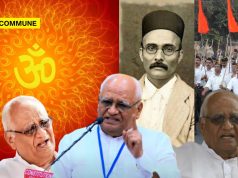
The Hindu Religious Charitable and Endowments (HR&CE) is the institution that administers Hindu temples, some Mutts and also other trusts and endowments. The idea of regulating temples started with the British in India, although they always wanted to keep the country secular, i.e., to keep religion separate from the government. In 1863, the British brought the Religious Endowments Act to give the government the authority to regulate places of worship, and by doing so, to take the finances of the temple into their control.
In 1925, the Madras Hindu Religious Endowments Act, 1923 was passed with the aim of providing for better administration of certain religious endowments. Immediately after the Act came into force, its validity was challenged on the ground that the Act was not validly passed. For this reason, the legislature enacted the Madras Hindu Religious Endowments Act, 1926.
Later, this was translated into the Madras Hindu Religious and Charitable Endowments Act 1951. Furthermore, this became the Tamil Nadu Hindu Religious and Charitable Endowments Act in 1959. This act gave the state government, the authority to set up a department called the Hindu Religious and Charitable Endowments (HR&CE) department, to maintain and manage the finances and accounts of Hindu temples. In Tamil Nadu, this has now been further extended to Jain temples as well.
The 1959 Act amended and consolidated the 1951 law relating to the administration and governance of Hindu Religious and Charitable Institutions and Endowments in Tamil Nadu. It said that the Act applies to the whole state of Tamil Nadu. It also explicitly mentioned that it applies to all Hindu public religious institutions and endowments including the Incorporated Devaswoms and Unincorporated Devaswoms. Apart from these basic provisions, the TN HR&CE Act also clearly mentioned what authority the HR&CE department has, and does not have.
Under this Act, the HR&CE’s function is to avoid the maladministration of Temple lands and to better manage the finances of the temples. It is to be noted that, only Hindu and Jain temples are put under such a department to manage their finances. Temples of other religions are given the freedom to manage their affairs, as provided by Article 26 of the Indian constitution.
According to the official website of the HR&CE department, there are 45,994 Hindu and Jain Temples under the control of the Hindu Religious and Charitable Department. There exists a debate to date with Hindus on one side and the government on the other. While the Hindus strongly believe that they are capable of taking care of their religious institutions, the Government has held a stronghold that the interference of the HR&CE is completely essential.
P K Sekar Babu is currently the minister for the HR&CE department, and DR B Chandra Mohan IAS is the Principal Secretary. Under the Tamil Nadu Hindu Religious and Charitable Endowments Act 1959 an officer in the cadre of Indian Administrative Service is appointed and functions as Commissioner of the Hindu Religious and Charitable Endowments Department. The Commissioner heads general administration and all activities of the Department. The present commissioner is J Kumara Gurubaran IAS. There are a total of 2409 sanctioned posts which include posts of the Commissioner, Officers, sub-ordinate Officers, Executive Officers, Officers on deputation, Office Assistants, Drivers, Watchmen and Scavengers in the administration of this Department. At present, there are 1336 employees working in this department.
Bhoominathan, the Executive Officer of the Madhava Perumal Temple, Mylapore said, “I have been with the HR&CE since 1997. The primary functions of the Executive Officer include, keeping account of the revenue of the Temple they are incharge of, organising Thiruppani for the temple once in every 12 years, and also organising and conducting the temple festivals.”
As it has been a department that handles religious endowments, there have been various times in history where the HR&CE has been taken to court for its orders. For example, in 1951, two landmark judgements were passed. In the Devaraja Shenoy vs. State of Madras case, the court quashed the Government order to takeover the administration of the Shri Venkataramana Temple in Mulkipetta. In the Shri Lakshmindra Thirtha Swamiar of Shri Shirur Mutt vs. State of Madras case, the court quashed the Government order to takeover the administration of Shri Udupi Krishna Temple and Shri Sabhanayagar Temple in Chidambaram. These are just some examples of the many times the HR&CE has been taken to court. Even recently, the High Court quashed a order of the HR&CE to take over the Ayodhya Mandapam in Chennai.
Such cases have always ended up as a matter of contention for Hindus, most of who believe that the HR&CE is to be done away with. Some also strongly argue that the members of the department are involved in illegal activities. In an article in 2011, advocate TR Ramesh wrote, “HR&CE Department officials carry out of a lot of illegal activities in temples and other religious institutions. Most of their orders replacing Trustees or interfering in temple matters are without jurisdiction or in abuse of it. The general impression of Hindu devotees is that these officials have the power under law to do such acts. Nothing can be farther from truth.”
The problem that many point out is that the both the Dravidian parties who have occupied the government in Tamil Nadu are against the ideas of Hinduism, and that they therefore exploit the revenue of Hindu temples. Bhoominathan however said, “The current DMK government is doing much more for the progression of Hindu temples. They’re taking lot more efforts for the Thiruppani of the temples, an bringing about a variety of schemes for their welfare.”
The present HR&CE department has come up with a number of schemes, including, Annadhanam, Elephant Rejuvanation Camp, Kalaignar Thalamarakandrugal Nadum Thittam, Oru Kaala Pooja scheme, and other welfare schemes for temple employees. The DMK government also became notorious for introducing the scheme for all community members to become priests, and the Annai Tamizhil Archanai scheme that promotes Archanas in Tamil. The Hon’ble Chief Minister MK Stalin also introduced uniforms for the temple staff of all temples that come under the department.
Karnataka is another state in India that has the HR&CE for Hindu temples. However, Hon’ble Chief Minister of Karnataka Basvaraj Bommai, recently also spoke about how Hindu temples in Karnataka should be free of the control of the HR&CE. It is still a question whether the HR&CE is actually doing good for the temples of Tamil Nadu. At the same time, whether the HR&CE is still required for Hindu temples in Tamil Nadu will continue to remain a never ending debate.
Click here to subscribe to The Commune on Telegram and get the best stories of the day delivered to you personally.




